Disclaimer / Gyromitra and ALS
I am in no way telling you to go out and eat Gyromitra, but, like it or not, they are a traditional food eaten to this day in some places.
As people continue to eat them, with poisonings still occurring regularly from improper cooking, I've tried to present relevant details on these mushrooms and, most importantly, a tried and true method for cooking them that can help those who choose to eat Gyromitra not get themselves or others sick.
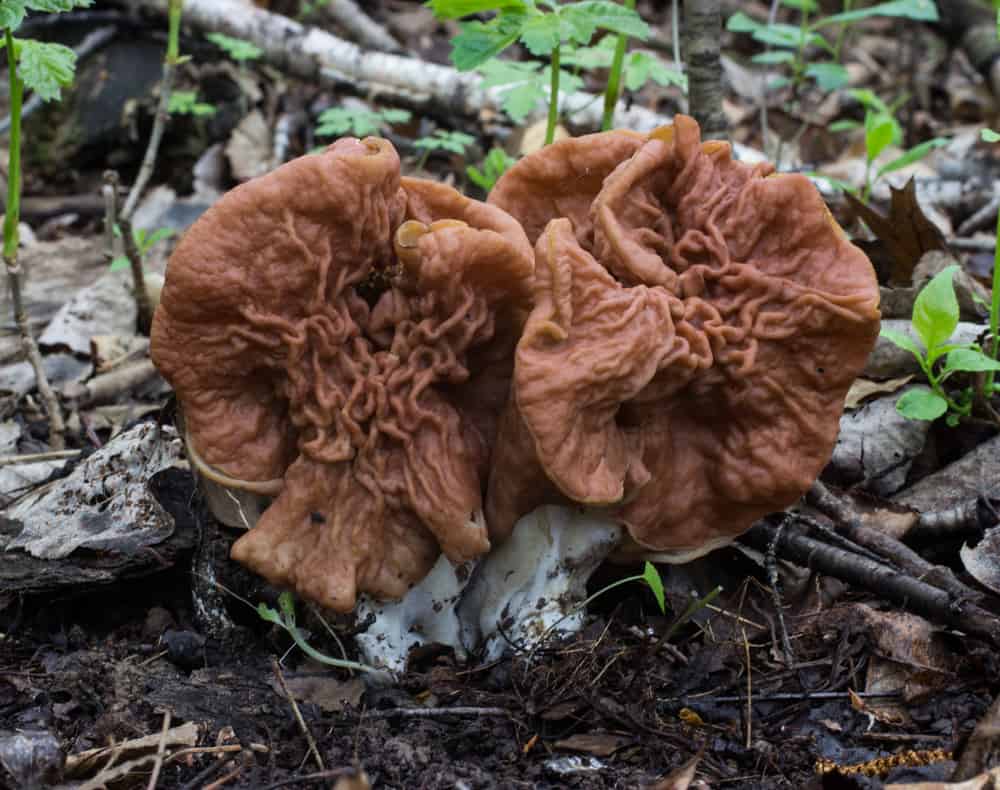
There's also new information that's come to light regarding false morels and ALS (Lou Gehrig's disease). There's a number of articles and studies online focused on Europe, and connections between eating G. esculenta and ALS. Since the articles have come out, even the government of Finland is now recommending that G. esculenta not be cooked.
Since the Alden study came out, we now have definitive evidence that the amount of Gyromitrin varies drastically by species, and that some false morels contain undetectable amounts and are safe to eat, while others are not. Taking that into consideration, I only recommend people eat those species that are safe.
Original text
Behold Gyromitra, the false morel, scourge the mushroom hunters and terror of Spring!
I can still remember the first time I saw one, I felt insulted. I knew they were deadly from seeing a picture of them with a skull and crossbones in a guide, even seeing them was scary.
I looked at them like some sort of desecration of my morel patch, an abomination. I remember stomping on all of them with angry fear, damn right I was going to destroy every single one of them. I was even uneasy cleaning them out of the soles of my boots.
Later that year I saw something strange after I'd put up a couple posts on poisonous mushrooms to help round out the collection of basic ID posts on mushrooms I've done for this site.
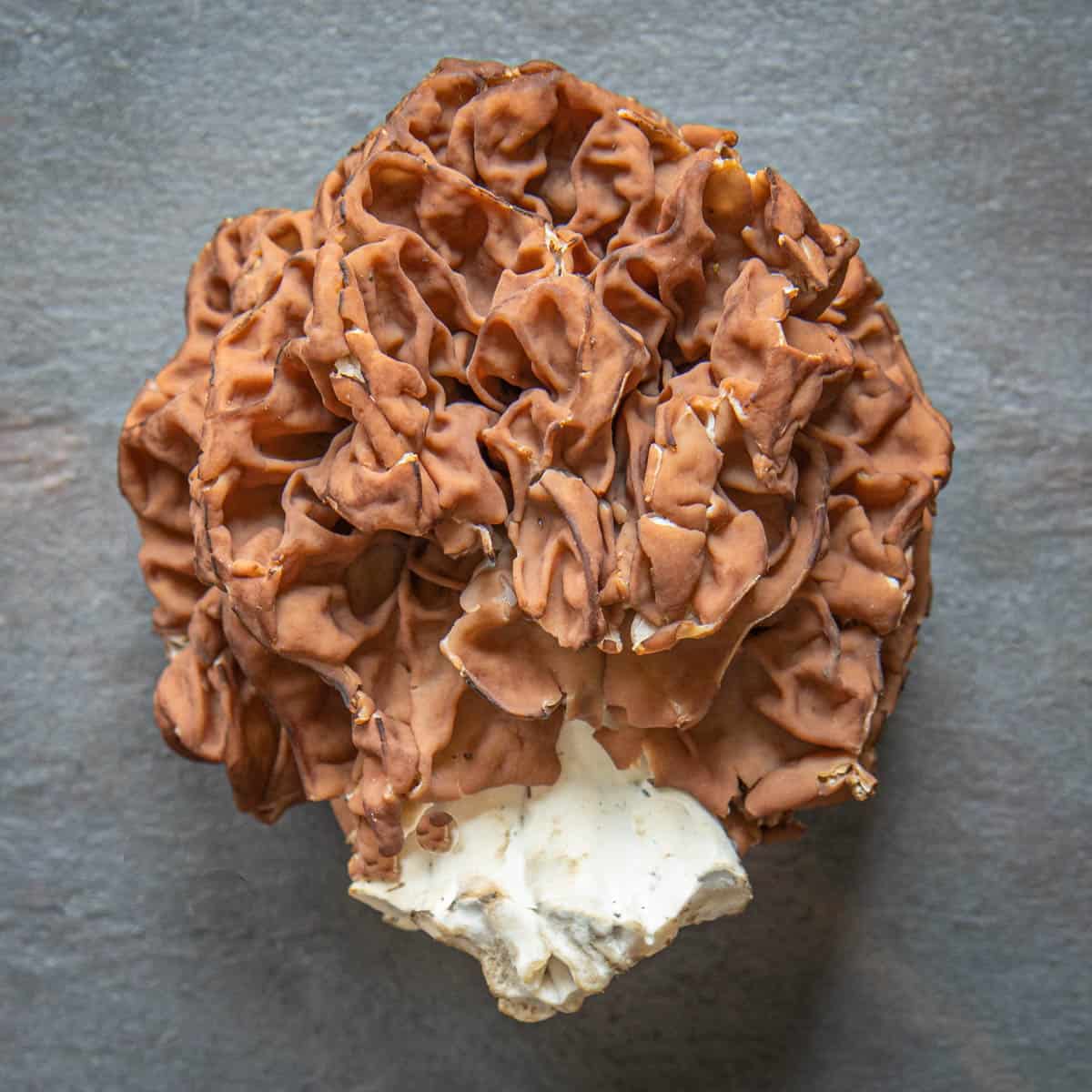
The first post I put up was a basic one on Gyromitra, the family of mushrooms known casually as false morels, death verpas, false peckerheads, beefsteak mushrooms, brain fungus, reds, etc, with a couple pictures and paragraphs.
I would expect the post to get more traffic during morel season, which it did, but when I looked at keywords people were using that led them to the site I was shocked, there were a number of combinations like the following:
- "False morel, how to eat/cook"
- "Best way to eat false morel, beefsteak mushroom"
- "Cooking/eating brain fungus mushroom"
- "Best false morel recipe"
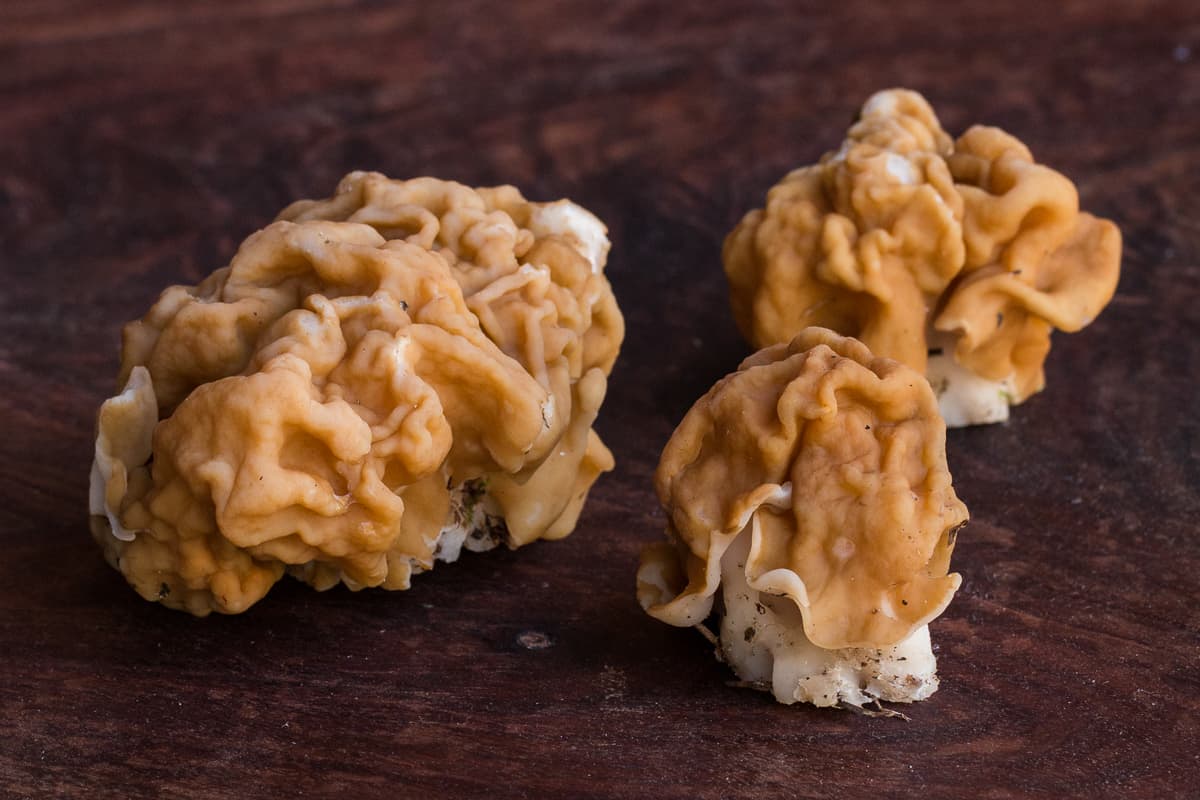
People have eaten false morels around the world, for a long time
Even a few searches for eating a poisonous mushroom would be a little odd, but the kicker was the geographic density of the searches. The vast majority of the searches for cooking Gyromitra were coming from different parts of Michigan, and most of them on the Upper Peninsula. Now I was curious.
I didn't understand, shouldn't they all be dead? What was going on?
About this time, I lost myself hunting morels and forgot about the Gyromitra for a couple years, until I had a conversation with my friend Patrick, the most experienced mushroom hunter I know, and a well connected member of our local mycological society.
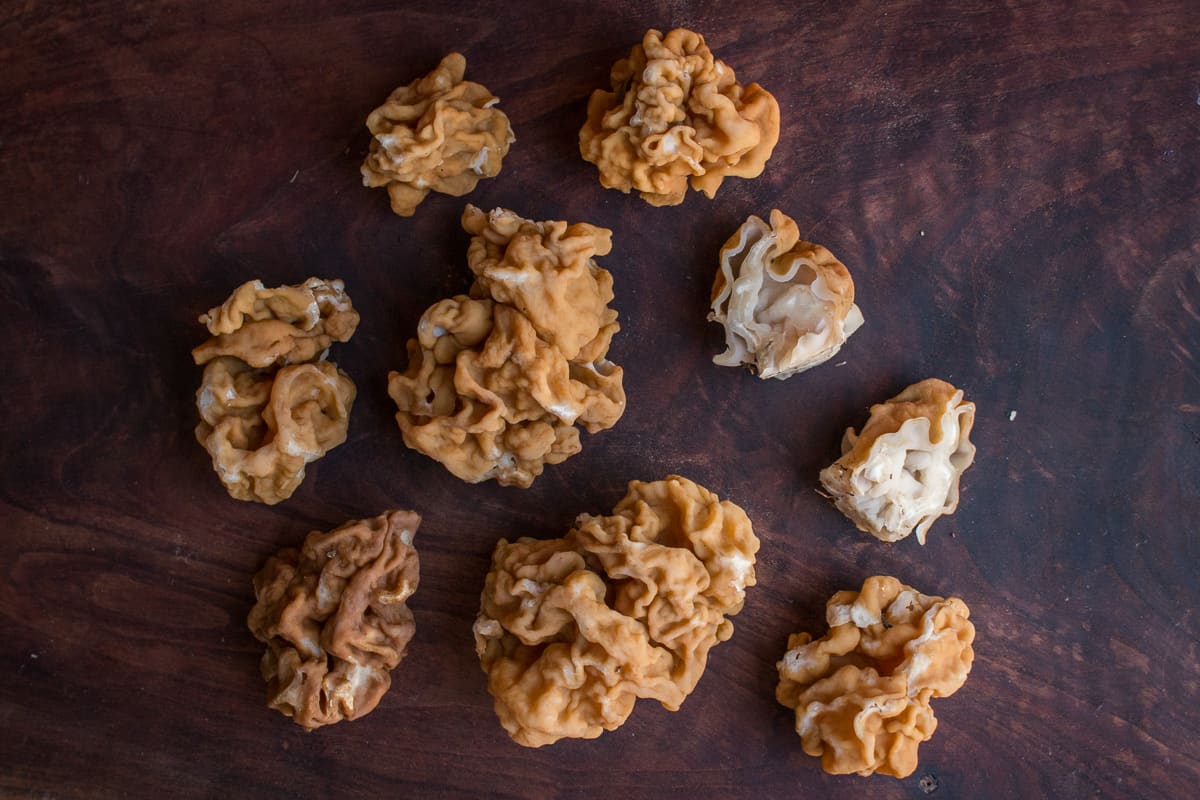
Consumption in Europe
He told me the story of a friend, an old doctor of Finnish descent, and the family doctor to his wife during her childhood. The doctor, like a lot of people close to their European ancestry, loves hunting his mushrooms.
The doctor's favorite were Gyromitra. He'd told Patrick stories of markets in Finland where dried Gyromitra are piled up to the ceiling for sale, and to boot, Patrick's wife can remember dining on fried Gyromitra in her youth at the doctor's house with her family.
By Patrick's wager, the doctor has probably eaten the mushrooms every year for around 50 years, and similar stories are not hard to find doing a simple internet search.
Lorchel and Murklor
A little deeper search, using terms like Murklor (a Scandinavian catch-all term for Morchella, Verpa, and Gyromitra) will further illustrate historical consumption in Europe, and....they even used to be sold canned in Germany, where they're known as Lorchel. The problem, is that there's conflicting evidence to the tenability of being a long-term false morel eater.
The alleged problem is that Gyromitra contain a compound that gets metabolized into monomethylhydrazine in the body, which is a carcinogenic compound of rocket fuel that is both contained in the flesh of the mushroom, and apparently gets cast into the air during cooking.
This makes false morels the only mushroom I'd heard of that you could get sick from cooking, even if you don't eat them. As fascinating as the natural bio-synthesis of fuel components in mushroom form may be, they're probably not that good to have in your body.
This sounds pretty cut and clear, false morels are bad, obviously, I mean they're called "false morels", right? But, if these mushrooms are truly as deadly, dangerous, and as terrifying as we make them out to be is hotly debated in the mushroom community.
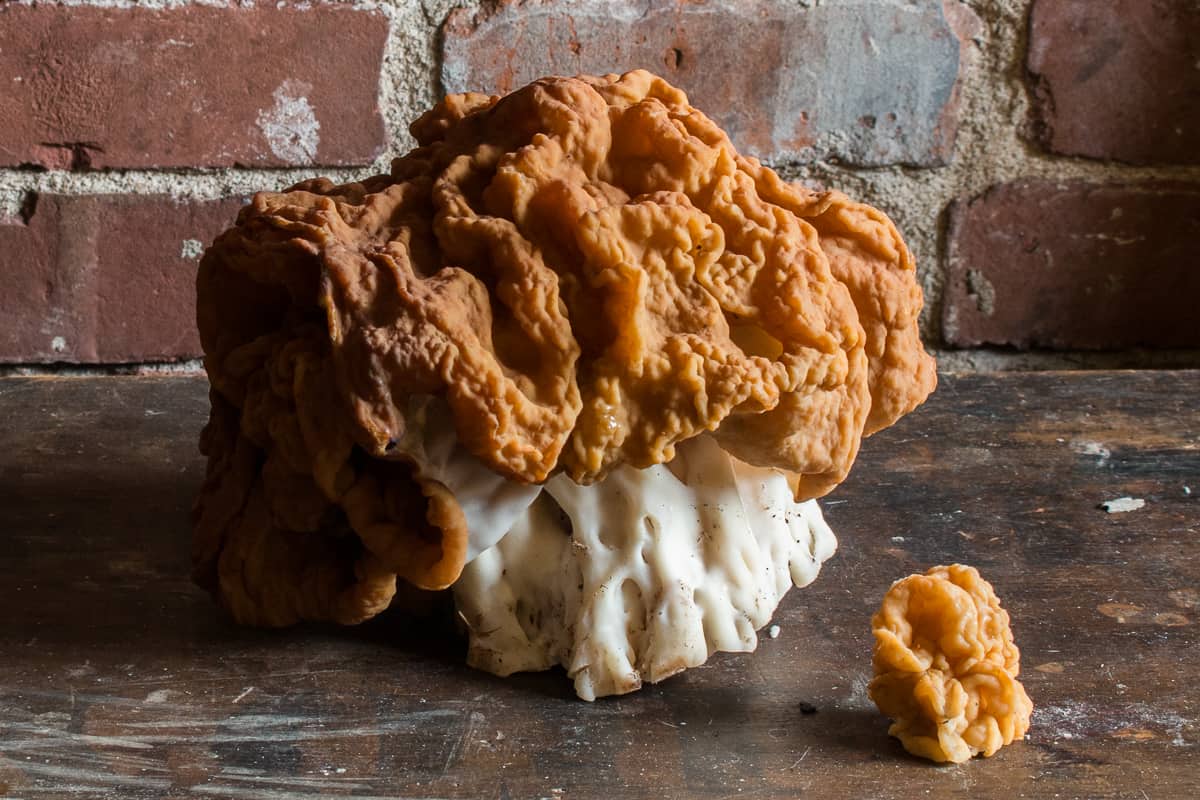
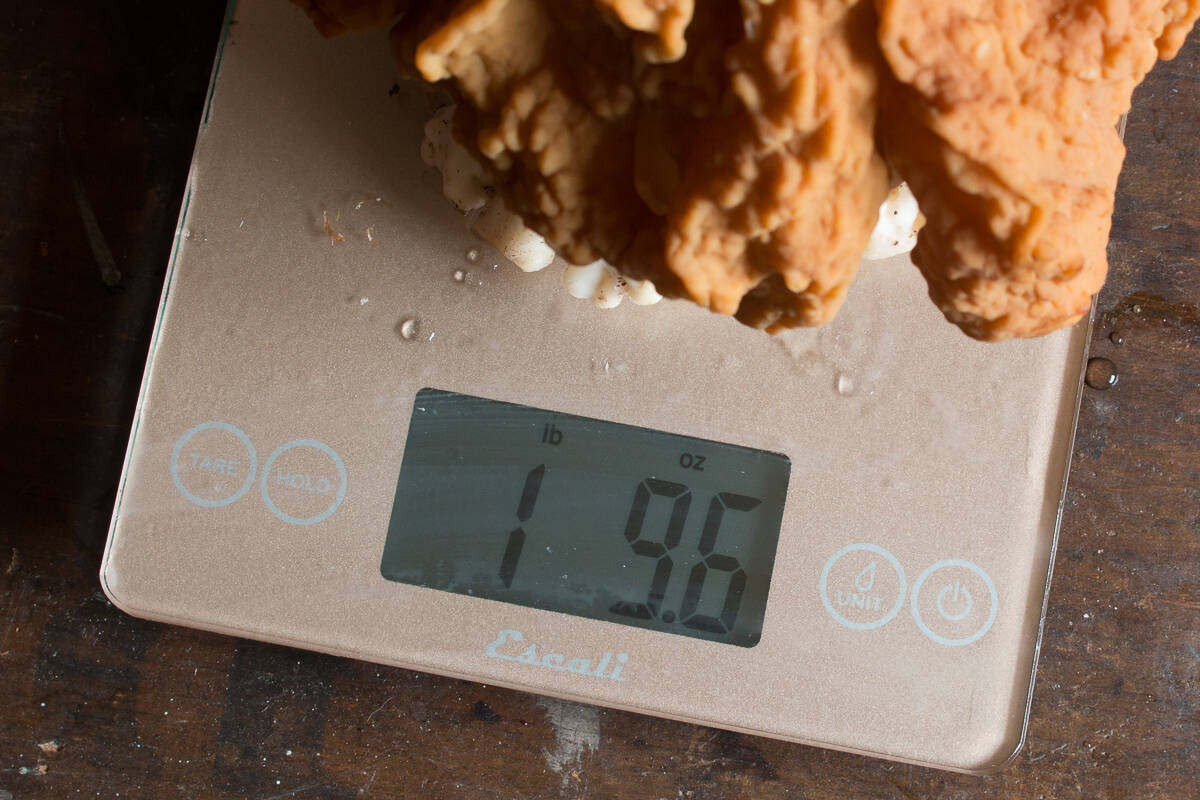
Amounts of Gyromitrin Can Vary Greatly Between Species
The danger seemed to be that the toxin gyromitrin from the mushrooms builds up in your body. To further confuse and compound things, different species of Gyromitra can have negligeable amounts of the toxin gyromitrin (see G. montana and G. caroliniana), or a lot (Gyromitra esculenta).
This accounts both for deaths involving eating the mushrooms, and for the anomaly of long time, habitual eaters like our friends in the Upper Peninsula. Now we're getting somewhere.
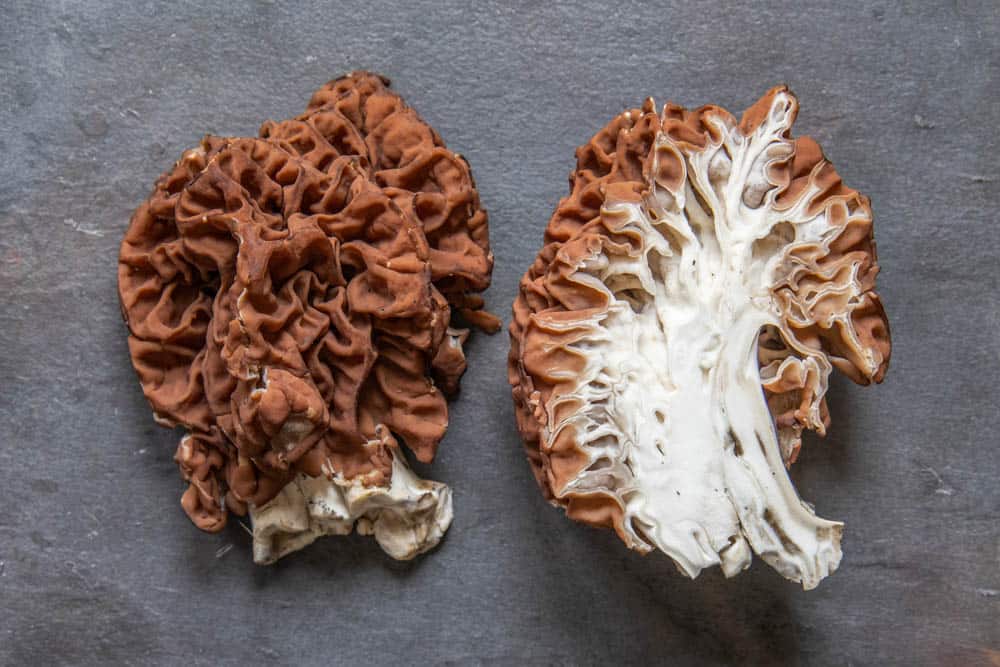
Identification
Gyromitra can look similar to morels for people just starting to hunt mushrooms, but there's two key points that will help you separate them in the field.
- Gyromitra have folds, not pits like morels in their caps.
- While morels are hollow, false morels are not, as you can see in the above picture.
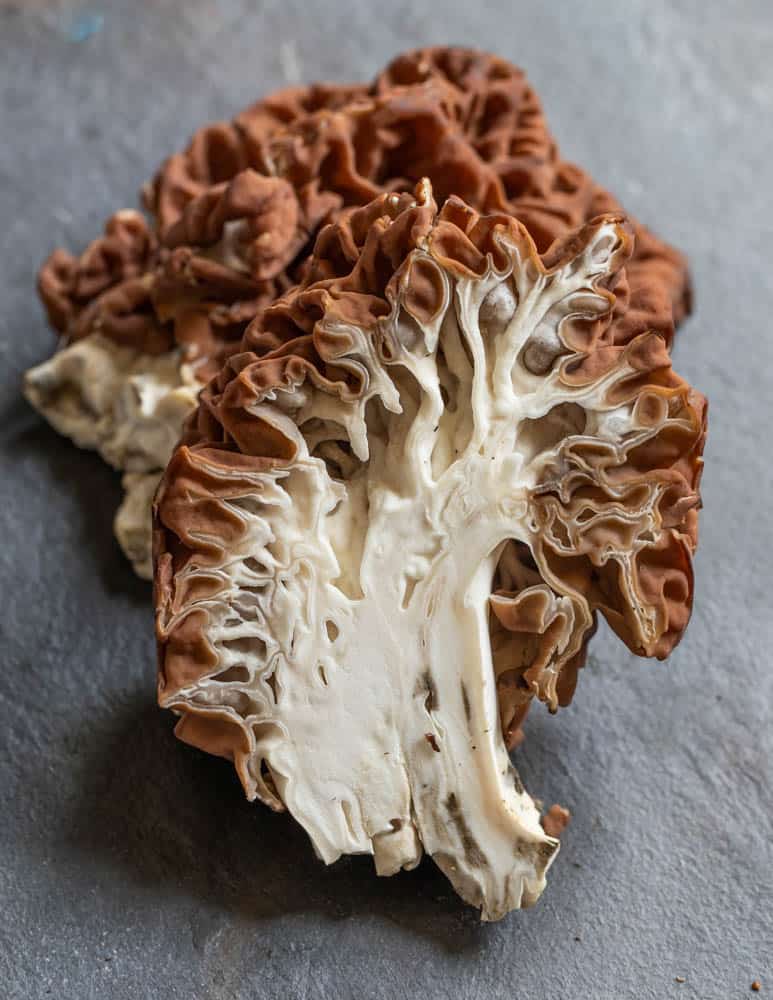
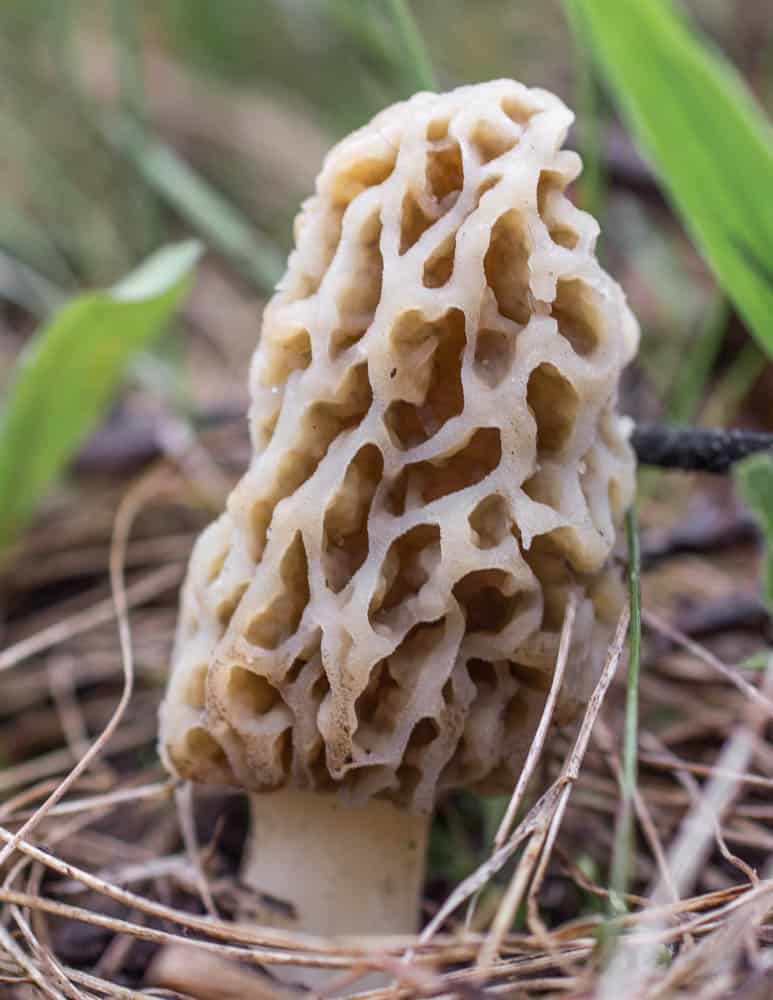
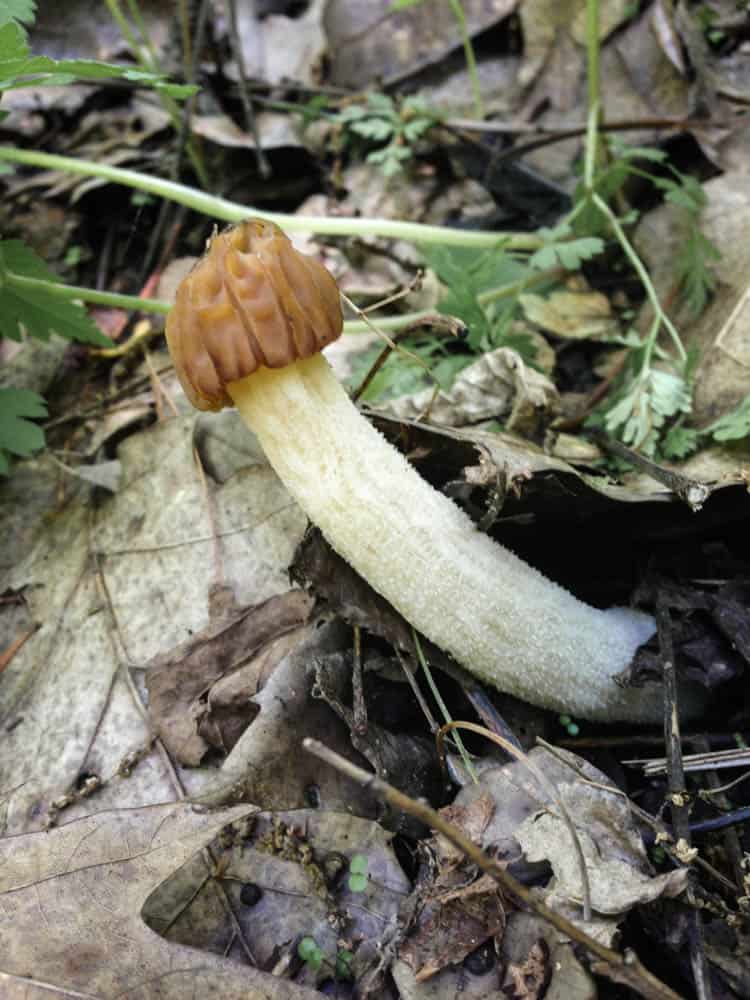
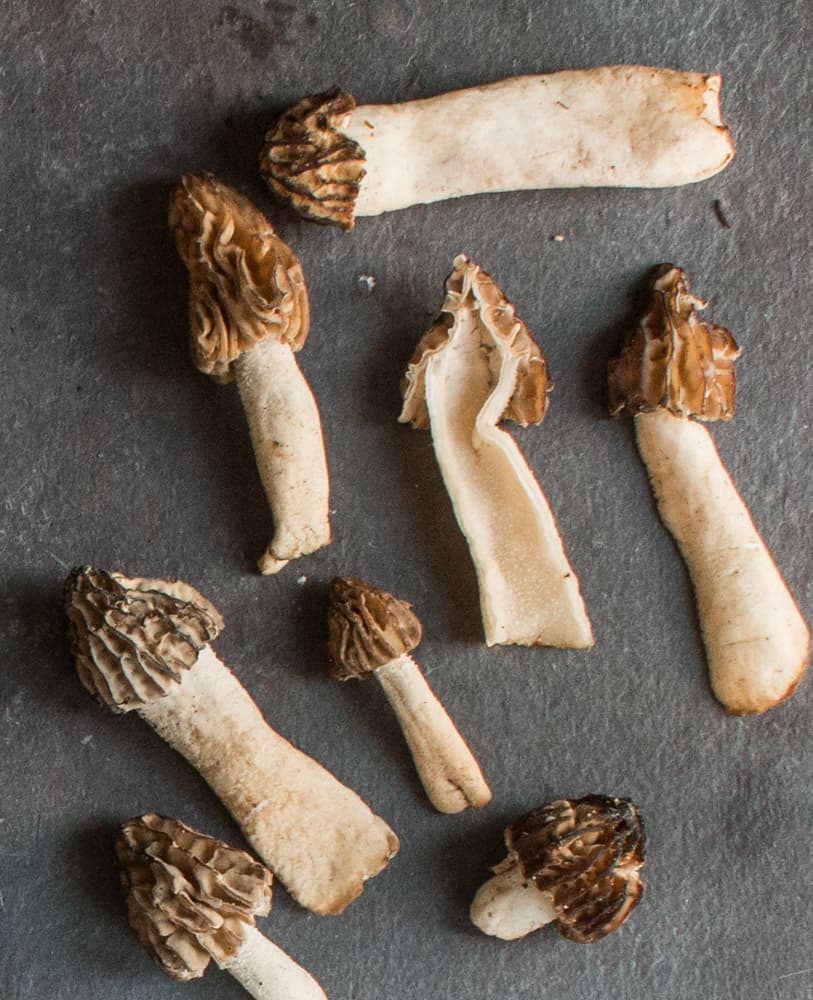
Morphology / shapes
There's a lot of variation with these mushrooms. Here's some really helpful images put together by Wes Lee, a member of False Morels Demystified.
See a link to the popular morel myth-busting Facebook group at the bottom of the post. I'd suggest copying the image below or saving to your phone to help with your identification.
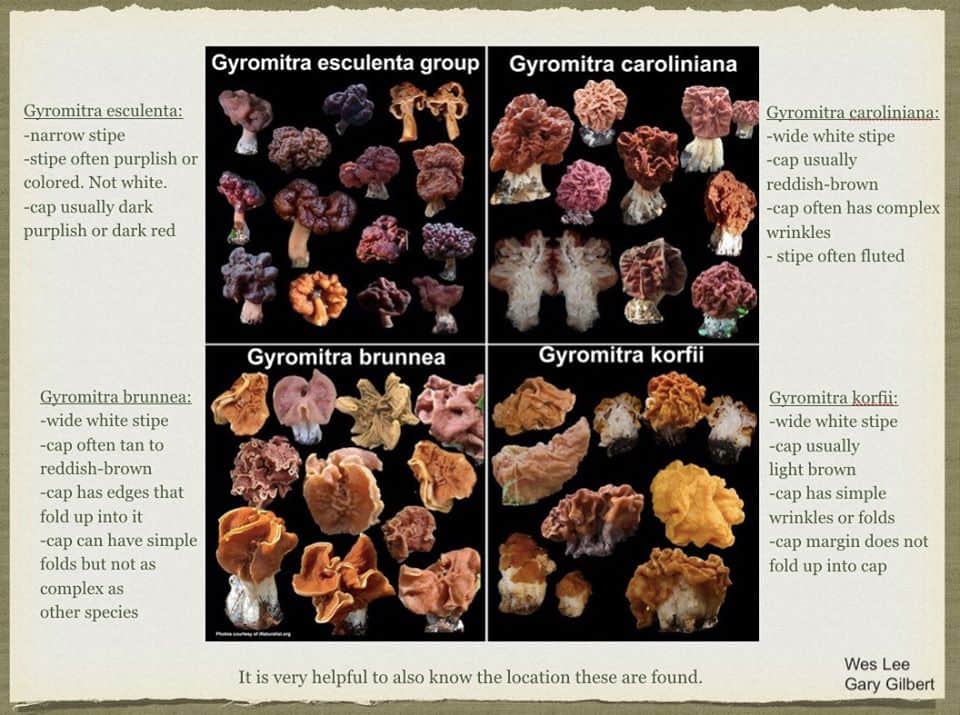
Edibility
In an article for Fungi Magazine, Mycologist Michael P. Bueg writes the following synopsis regarding G. caroliniana and brunea (link to the whole article at the bottom of this post).
"I conclude that Gyromitra
caroliniana and Gyromitra brunnea
(the two species are easily confused)
are probably no more dangerous to
consume than Morchella species"
According to Bueg, Gyromitra are, at the same time, edible, delicious, and dangerous, but it all has to do with the exact species of Gyromitra being consumed. It appears that some Gyromitra could contain levels of gyromitrin so low they're completely edible, some, quite the opposite.
Thankfully a recent study came out with a new method for testing the levels of gyromitrin in specific species. The mushroom species in blue below had negligeable levels of gyromitrin, while the species in red (especially the Esculenta clade) do. Gyromitra species colored in blue can be sauteed / cooked (very well, at least 15 minutes) as you would cook morels. They can also be dried.


Gyromitra esculenta can be dangerous
For the most part, Gyromitra esculenta, if it isn't confusing enough having the last part of it's name as a word meaning edible, is reputed to be the most dangerous as far as the concentration of Gyromitrin/hydrazine, and this is confirmed by the Alden study.
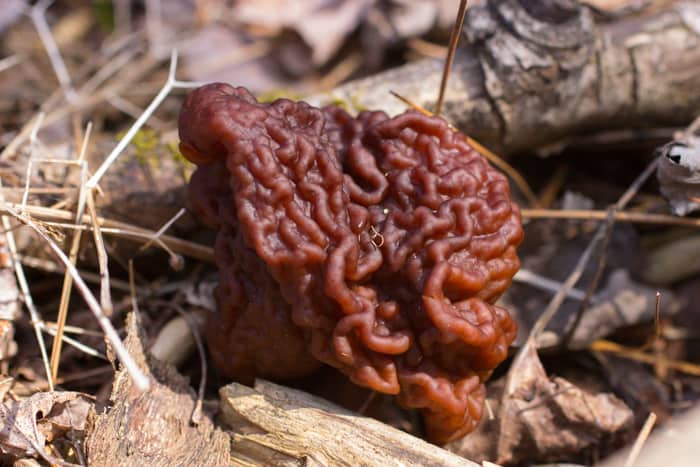
Even more confusing, is the fact that G. esculenta could possibly be the most widely consumed Gyromitra in the world, as countries that have historically eaten the mushroom are known for consuming the particular species.
While some Gyromitra experts will say, yes, all the gyromitra are edible, and some like Gyromitra caroliniana don't even need to be boiled before eating, all will agree G. esculenta always needs to be boiled if it's going to be eaten.
Personally, I'm probably only going to eat caroliniana, brunnea, and korfii, but when I do, it's in small quantities in the spring.
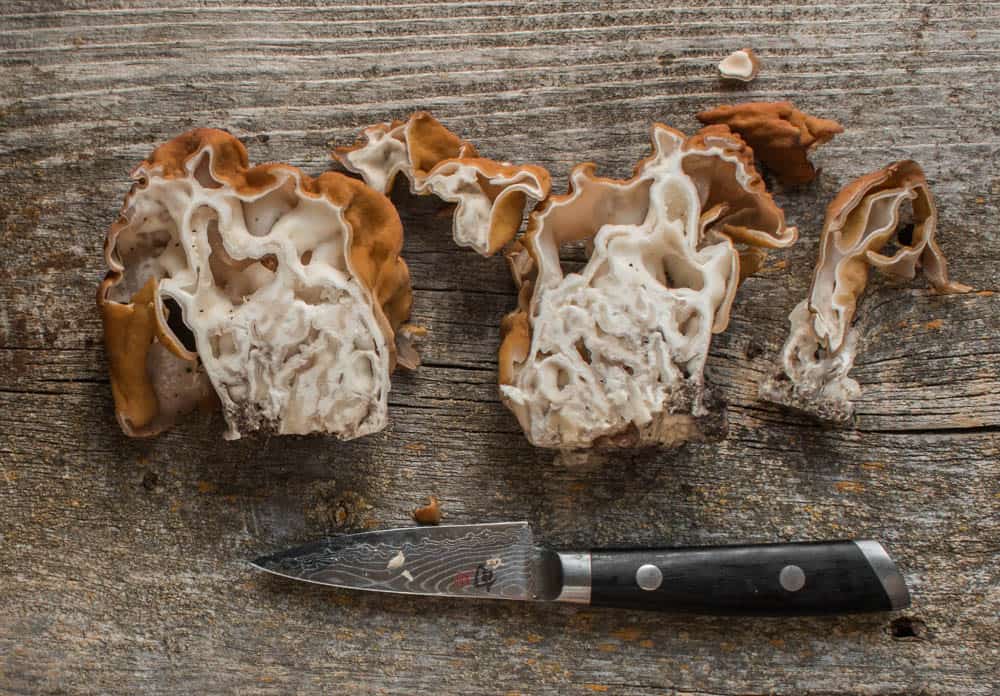
Cooking, Eating, and Safety
Taking all that into account, and going against just about every ounce of logic my brain had, I knew my curiosity wouldn't be sated until I tasted one, so I told my friend Alex, a local mushroom hunting savant to be on the look out for them.
A few days later she came around and I had myself some false morels, along with a few sarcastic jeers.
I waited until I had a day off, opened a window, turned on the fan and the hood vent, brought a pot of salted water to a boil with the mushroom, put a lid on top of the pot and tied a rag around my face for fear of the air-borne hydrazine killing or blinding me.
I went and sat down in the other room while the Gyromitra simmered away. After a few minutes I could start to smell something in the air, it smelled nice and mushroomy, but that was all.
My friend Patrick said that he had walked into the doctor's house while he was boiling Gyromitra and could smell the rocket fuel in the air, so I wanted to know if it was true, again, maybe the varying levels in mushrooms can smell different when cooked, I don't know.
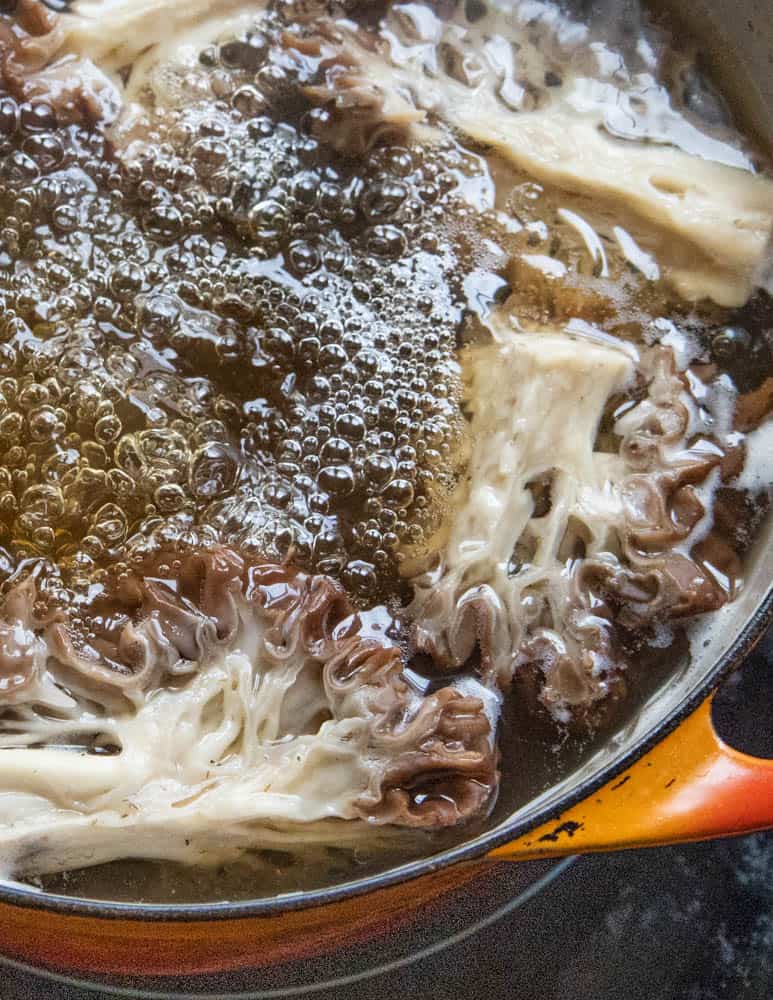
After I could tell my little false morel was totally cooked through, I took it out of the pan, threw away the water, dried it thoroughly (very important since water gets trapped in the cavity of the false morels and will pop and explode in a hot pan), then I fried it in butter and ate it alone, in a dark corner, with a napkin on top of my head to hide my shame from god.
How do they taste?
Here's the thing about forbidden fruit, it isn't usually forbidden because it tastes bad. I would be lying if I said eating the Gyromitra didn't taste very good, these were like eating a giant morel, although milder from the par-boiling.
The folds inside the stem that are usually a hollow in morels catch and hold all sorts of juices, tasting like tender layers of morel-flavored ruffles. You might be wondering why I would describe how to cook a false morel, below-the answer brings us back to what lead me to these in the first place.
People will continue to eat false morels whether you, me or other mushroom hunters think they should or not.
As there's a lack of information on the subject I wanted to provide a template with precautions and clear directions people could find to reference, since they're one of the most common culprits of mushroom poisoning in North America.
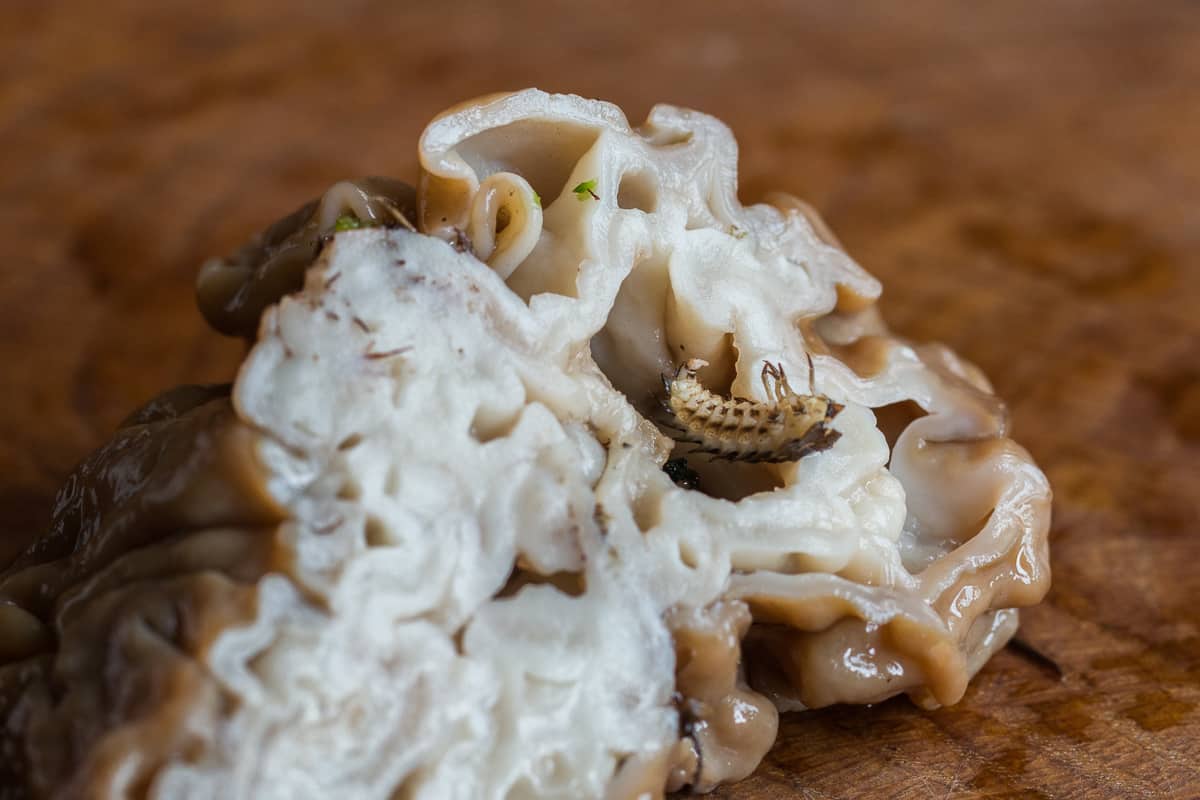
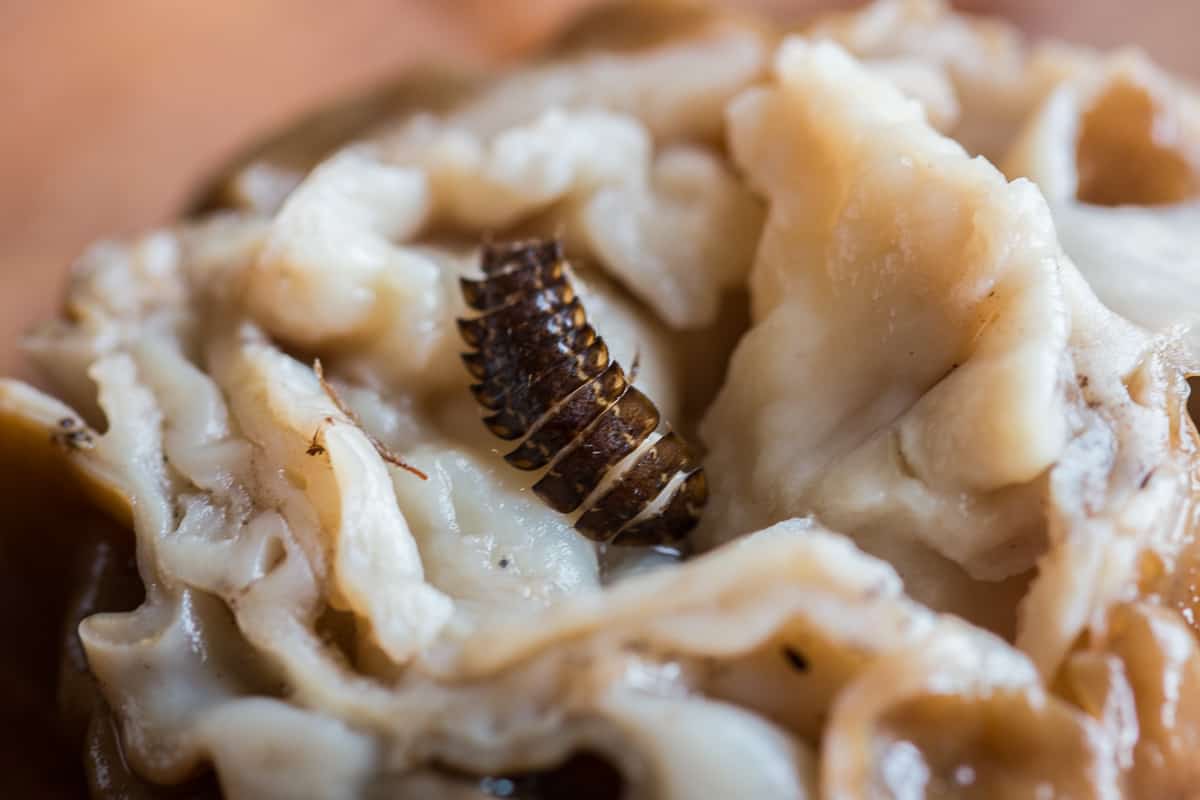
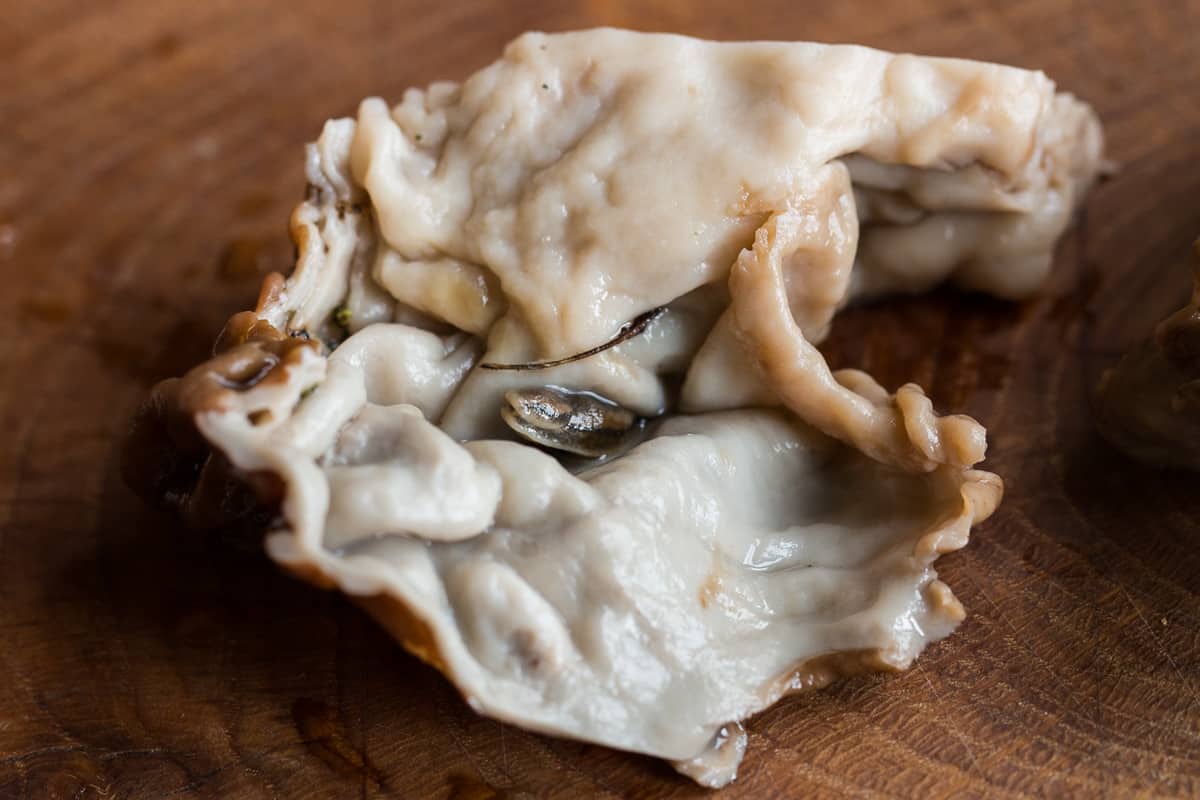
Cleaning
Knowing your species, etc, is only half the battle here. When it comes time to cook them, there's another learning curve---cleaning. Gyromitra korfii that I've eaten have lots of folds in their pileus and stem.
Those folds inside can also be infuriating to clean. Like hen of the woods they can function as shelters for bugs, and even in pristine mushrooms.
I regularly have to rinse and look over mushrooms after blanching to make sure there aren't any cooked slugs, sticks, dirt, or other debris. Yummy, right? After blanching, cut them in half or into large pieces depending on size and inspect them, then proceed from there.
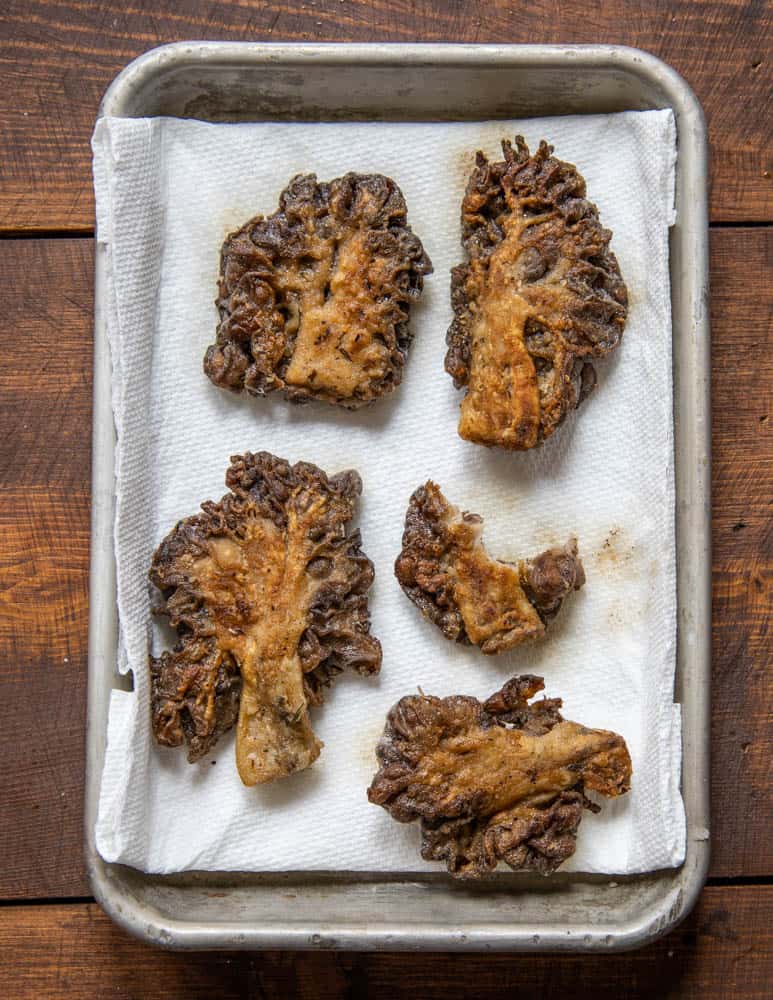
However you feel about false morels, I hope this article has been at least a little helpful for you, and at the very least may help you to not kick them in the woods when you see them.
How to Cook False Morels or Gyromitra Mushrooms
Ingredients
- A few tablespoons of unsalted butter or cooking oil
- Gyromitra mushrooms
- water
Instructions
- Inspect the Gyromitra for bugs, debris, and dirt. Clean the mushroom diligently, swishing around in a bowl of cool water as needed to loosen any dirt. Cut it in half if small or quarter them if large and inspect diligently for bugs and debris.
- Open all the windows in your kitchen, and use a kitchen hood fan if available, or use a box fan to blow air out of the kitchen if you're cooking Gyromitra esculenta or others with higher amounts of gyromitrin. (See safety note)
- Bring a pot of water to a rolling boil, add the gyromitra, put a lid on the pot, bring it back to a rolling boil and cook for 10-15 minutes, depending on how many you're cooking, or until they're completely cooked and wilted.
- If using Gyromitra esculenta, repeat the process 1-2 more times.
- Remove the Gyromitra. Discard the water. Put the Gyromitra between a few sheets of paper towels and press to get out as much water as possible. Season both sides of the mushrooms with salt.
- Heat the butter in a skillet, like cast iron, and cook the mushroom on medium low heat about, flipping once, for about 5 minutes on each side, or until the mushroom is deeply caramelized and browned, then drain for a moment or two on a paper towel to shed fat, and eat. Sprinkle some extra salt as you eat if you think it needs it.
Video
Notes
Some Gyromitra must be par-boiled before cooking, especially Gyromitra esculenta. Some, like G. caroliniana and G. korfii do not need to be boiled. If you do not boil them, the mushrooms must be well cooked for at least 15 minutes, and I recommend using a wet saute to ensure they're cooked. Ventilation I recommend using ventilation, fans, or a hood vent while par-boiling, but it's in the interest of being overly cautious. Gyromitra esculenta must be par boiled, as well as some others.
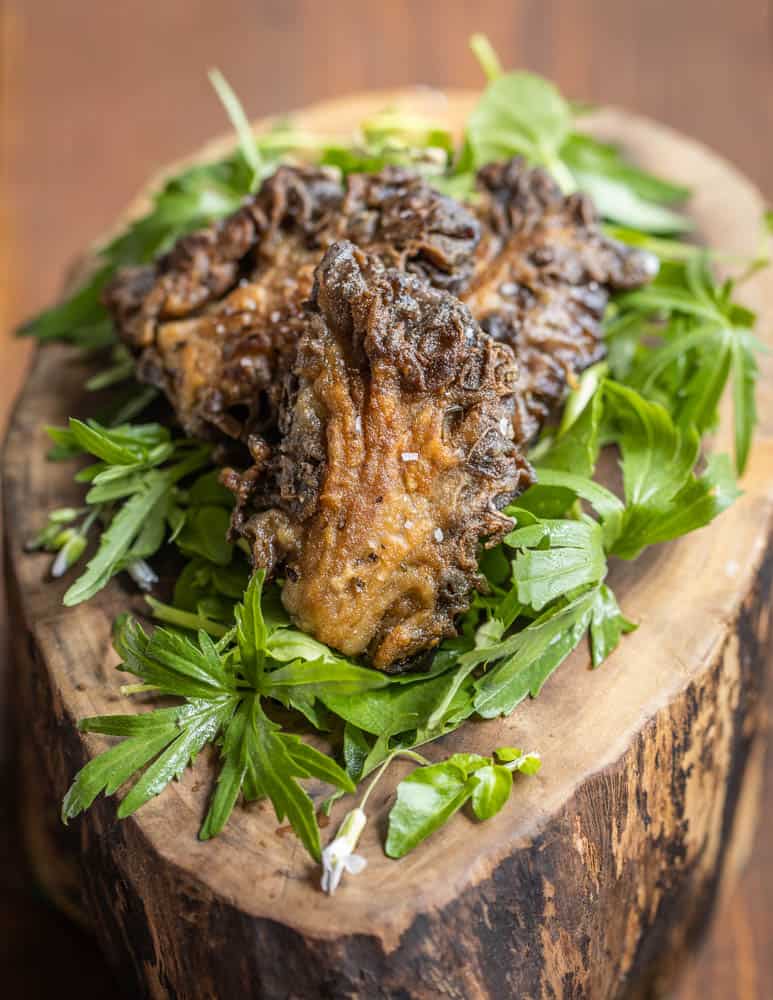

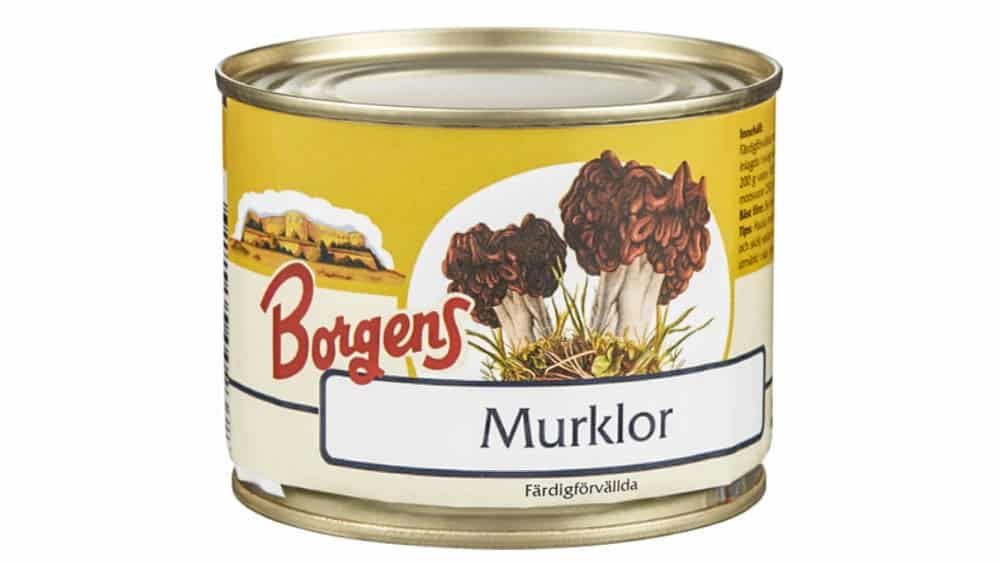
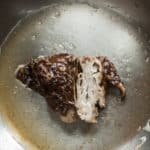
Jack M
Just tried what I am 97% sure is Korfii. Tasted incredible. I really hope I didnt misidentify, but I suppose I will find out in the next 12 hours!
Paul
I just wanted to bring to your attention the results of a study by a US neuroscientist Dr Peter Spencer and Dr Emmeline Lagrange at the Grenoble Alpes University Hospital. Montchavin, a village in the French Alps, has an extremely high incidence of motor neurone disease (1 in 10 of the population) - they concluded it was due to consumption of false morel mushrooms.
Alan Bergo
Sigh. I wonder if anyone actually read the studies that article was based on. I wish it was a simple yes or no answer, but it isn't. I have read that Article, as well as Peter Spencer's work, and I spoke to him after he dragged me in a few presentations to mycological societies around the US for my having the gall to demonstrate boiling them to people. That article in the Atlantic you're referring to co-exists with the Alden study, and the lynch pin of the whole thing, so to speak, is the compound gyromitrin. One of the studies Peter Spencer did actually used the data from the Alden study and is mentioned at the end. The Alden study showed us that, as was suspected for a long time, different species of Gyromitra contain varying amounts of the compound, some have a lot, are dangerous and I agree they should not be eaten, but this only applies to species that actually contain Gyromitrin, like Gyromitra esculenta. No where in those studies are species like Caroliniana or brunnea mentioned. Saying things like "all false morels cause ALS" is not helpful, and is definitely not supported by the evidence. One of the studies Spencer was involved in actually misidentified the species in question as G. gigas, when it was in fact G. esculenta. The gigas specimens from Germany were then tested and found to be gyromitrin free.
Cheryl
I'm still a little confused about identification after consulting a number of online articles. The picture(s) you used above with 4 images above the caption "Morphology and Shapes" - is it a photo of 1 false Morel (top left) and the other 3 photos of True? In Oregon we pick ones that look like the 2 bottom photos. The cap pops off, we don't eat the hollow stem as it turns mushy, then flour and fry.
KP
I love mushrooms but just read an article on an ALS cluster, each person in the cluster was fond of eating false morels - as compared to other foragers in the area who did not eat false morels, and who didn’t get ALS. There are of course many other possible toxins associated with ALS risk, but this cluster of cases was convincing enough to me that I will never eat a false morel. =(
Alan Bergo
KP, the man who did those studies did this before the Alden Dirks study came out, and both those studies compliment each other. But, the ALS info only applies to mushrooms that contain Gyromitrin. The others have been proved through a new liquid chromatography method to not contain Gyromitrin. I’ve corresponded with Peter Spencer (the author) after he tried to drag me during his presentations to mycological societies across the country. You don’t have to eat any Gyromitra, but Spencer’s broadly painted oversimplifications are outdated and only refer to Gyromitrin containing species, as the Alden Study proved. I'll add that the recent (2025) Atlantic article also only discusses Gyromitra esculenta-which we already know is problematic. As a side note, it's also interesting to consider that the Gyromitra in the Swiss study were mis-identified as G.gigas, but this was later corrected as it was proven German specimens of G. gigas contain negligeable amounts of Gyromitrin. Here's a link on that.
Sandy
I read the article as well and have come to the same conclusion… with the added part about not kicking them either!
Lars-Ove Larsson
I would recommend repeating steps 3 and 4 at least 3 times for safety. Fry with chopped onions, add a little white wine and some heavy cream and boil for 15 minutes to reduce the sauce to a nice thickness. Season with salt, pepper, and maybe some squeezed lemon. Serve with a nice sirloin steak.
/the Swedish home chef
Alan Bergo
Thanks for sharing some Swedish insight here Lars, I appreciate it. It's important to note that only applies to species that contain Gyromitrin, G. korfii, G. montana, G. brunnea and G. caroliniana can all be cooked like morels as long as they're very well cooked. Gyromitra esculenta is eaten but I really can't recommend it when it contains Gyromitrin and other species don't.
Elena Beachy
I absolutely love the napkin on your head to hide your shame from God🤣🤣🤣!!!!!
I just found a nice patch of them and I am about to taste your recipe. Without the napkin on my head because you are still alive!!!!
Alan Bergo
Thanks Elena.
Dan Burke
I tried Caroliniana for the first time this evening. My portion was a quarter of a small cap. It was parboiled 15 minutes in salt water and then fried in butter until crispy. Good flavor! If I am alive and well tomorrow, I will make good use of the other 5 lbs of them that I found. Thank you for this very comprehensive write up on Gyromitras.
Debbie Viess
I was about to link to Alden's gyromitrin study, but I see someone else already did. The only Gyromitra species in NA that contains gyromitrin is G. esculenta (the equally toxic G. splendida (PNW) and G. venenata may be synonyms, and look quite similar). There is also a cup fungus, G. leucoxantha, that is flattened like G. perlata, and is also toxic. None of the others showed even a trace in the deepest analysis ever done.
The volatile hydrazines found in G. esculenta can indeed cause rather severe poisonings, if you inhale the fumes while cooking. This is of course not true for the many NA species of Gyromitra that don't contain gyromitrins at all. So, no worries with your carolinianas!
If you haven't already read Alden's paper, published in Mycologia, I would highly suggest that you do so!
At any rate, nice analysis and documentation on a topic that causes a lot of angst among many.
Alan Bergo
Thanks Debbie. I got plenty of flak putting this up and the boiling helps people feel a little more comfortable. I know it's not necessary for some varieties but there's still lots of people who recoil at the idea that there's edible mushrooms in the genus. That Alden paper is fantastic though, thanks for bringing it up. I'll update this when I get a spare minute.
CDM
OMG what a hoot reading your 1st time preparing and eating 😂
Alan Bergo
Teehee
Nathalie
Thank you SOOOOO much for taking the time to explain everything in detail! I LOVE to read/hear about traditional uses of mushrooms around the world, especially those that are said to be dangerous nowadays. 🙂 I went to watch your video on Youtube too, and subscribed. 🙂
Alan Bergo
Thanks Nathalie.
Ananda Tracy
This is a great article. The same Facebook group you mentioned recently had a post from a researcher who had tested a wide variety of species of Gyromitra for giromitrin and it's analogs. This researcher gathered the Gyromitra specimens through that Facebook page. A wide variety of species had no detectable amounts of this toxic substance.
Preprint research (lab testing) on gyromitrin content of various Gyromitra species:
https://www.aldendirks.com/uploads/9/1/8/9/91898296/not_all_bad_gyromitrin_has_a_limited_distribution_in_the_false_morels_as_determined_by_a_new_ultra_high_performance_liquid_chromatography_method.pdf
Alan Bergo
Hey thanks Ananda, I'll add this as a reference.
Wes
Hi Alan,
Please consider adding a second boil to the prep if there is no exclusion of esculenta group. And also, the lid should be removed during that portion of the process.
Eugene Stoneking
Don't cut them like he showed , or parboil !!! Cut them like a sliced tomato/onion , then soak in salted water overnite , drain , pat dry then into an eggwash , and into seasoned flour , and fry a little more than a regular shroom , no need for the ventilation theory , eat a small amount if you've never had them before to make sure you're not allergic to them like shellfish/peanuts , don't gorge/stuff yourself either second time around , and don't drink too much alcohol either , will give you the brown bottle flu , chits !!!
Alan Bergo
This comment ignores the fact that I have a legal and economic imperative for people to not get sick attempting things I demonstrate.
davyd286
I suspect the cooking fumes danger is a myth. In Eastern Europe, people who were "poisoned" by Gyromitra were often found to have consumed mushrooms that were too old to eat, and even had mold within folds. Young clean mushrooms are never a problem (unless there's individual intolerance or allergy).
Alan Bergo
Hey Davyd, I would tend to agree there. But, until I have documentation and solid references I have to keep my advice the same.
davyd286
You're the boss here! I personally will wait for solid evidence that the rumoured toxic vapors do exist, but I appreciate how you emphasize on your pages that people should always take responsibility for their own food choices. I look forward to future posts.
Elise Barrett
The fumes are real, from my personal experience. I picked a bunch of g. esculenta (PNW), intending to blanch them and try them, but as they warmed up in my car they off-gassed through the paper bag and filled the air with a terrible chemical smell. At first I thought I must have driven through an area with some kind of pollutant, but I started feeling really sick— my hands and face tingled and started to go numb, I developed a throbbing headache with weird dissociative symptoms, and I started salivating a lot and finding it difficult to swallow. I pulled over, realized the smell was coming from the paper bag, and threw it away. Took my car about twenty minutes to air out, and me about as long to start feeling better. The symptoms didn’t entirely fade for the full day.
Now the smell of a fresh g. esculenta gives me a strong aversion, worse if it’s starting to warm up. I just stay the hell away from them at this point.
Meanwhile I’m literally cooking g. gigas for lunch right now lol
Alan Bergo
Ha. Thanks for Sharing Elise. I don't eat G. esculenta, but I'll eat the others on occasion.
lisa
A thought shared with me by a fellow mushroom hunter (also a chef): One reason it's suggested that G. caroliniana be parboiled before continuing cooking with other methods is because they're quite meaty, and people may have a tendency to cut them into thick "steaks." That could lead to undercooking because the heat might not reach the center, but boiling first would help ensure they're actually cooked through.
Erika
Great read! I love the paragraph near the end describing how you ate them. So funny! Sounds like someone else I know, me!
Alan Bergo
Yeah the first time was a riot. I don't eat them all the time, they're so widely available and easy to find they hardly compare to morels. I don't see any problem eating a few here and there though.